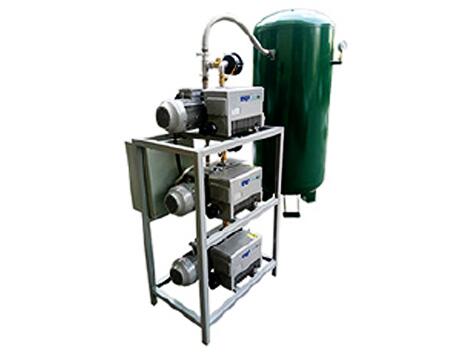Vacuum system for tool making
Vacuum system in tool making of practical application
With the development of tools and the popularization of vacuum technology in recent years, vacuum welding technology has been rapidly promoted and applied in the field of tool making, playing an increasingly important role and changing the previous situation that high-frequency welding accounts for the majority. The performance of the vacuum system for tool welding in a larger increase in recent years, the original in such a field of vacuum welding with each tool production factory, some directly USES the general vacuum furnace for welding operation, have a plenty of to modify general vacuum furnace, have a plenty of purchase imported vacuum system for welding operation. According to the vacuum system in the actual application of the cutting tool production, small make up to analyze the characteristics of the vacuum system.
Due to its own advantages (vacuum system has a good energy saving, environmental protection effect, the system operation is stable. At the same time, when dealing with high quality steel, good metallurgical effect is also an advantage of vacuum system. More and more widely used in the field of tool production, improve the appearance of products but also improve the efficiency and rhythm of production, product delivery time is further shortened, the market competitiveness is further enhanced, actively promote the process of tool production.
Vacuum system in tool making of application and development
1. Requirements and process of tool welding
In the production of tools, brazing is mainly used to weld the hard tool head (including high-speed steel, alloy, ceramic, CBN, PCD, single crystal diamond and other materials) to the relatively soft tool body (such as steel parts and alloy matrix), the tool body as a carrier, and the tool head as a cutting edge.
The basic requirements of the tool for welding are: no cracks in the welding, no virtual welding, welding strength to meet the use requirements. Therefore, different tool materials have different requirements on welding process. For example, high-speed steel, PCD, single crystal and other materials require lower welding temperature to avoid the influence of high welding temperature on their performance. The alloy, ceramic and other materials need to control the stress after welding to prevent cracks; CBN and other materials require higher welding temperature and welding strength to ensure that the high temperature of the tool tip will not lead to tooth loss and other conditions when grinding by car.
At present, high frequency (induction) brazing and vacuum brazing are more common in tool making.
High frequency welding process status
For tool products, high-frequency welding is mainly divided into three parts: preparation, operation and follow-up treatment:
Preparation: refers to the processing of the knife body and the blade to be welded to the appropriate state;
Operation: it means that the operator can heat the cutter body at the specified position by operating the high-frequency induction equipment, and at the same time conduct a series of temperature control, slag discharge, fixation, etc., to complete the whole process of adding flux, adding solder, melting and welding molding of the blade (the molten solder is evenly distributed throughout the welding seam).
Follow-up treatment: remove the welding residue.
Status of vacuum welding process
For tool products, the vacuum welding process can be described as two parts:
Outside the furnace: for the tool products requiring vacuum welding, select the appropriate vacuum solder (usually solder paste) and apply it to the groove of the blade correctly.
Furnace part: put the disposed tool products into the vacuum furnace, seal and vacuum continuously, heat the products in the vacuum state according to the procedure, melt the solder to complete the welding action, cool down and come out.
The purpose of the vacuum system for vacuum welding is to make the molten solder evenly distributed to all parts of the weld under the action of capillary straws so as to achieve the ideal welding effect.
In recent years, the tool production has made great progress, can meet the welding needs. The practical application of vacuum system in the manufacture of cutting tools can effectively eliminate the influence of air on the superhard cutting tools, and the appearance of the cutting tools is good. Make the heating temperature uniform in the furnace, the product deformation is small, the tool is not easy to crack. Under the condition of stable process, the cutter products have the same quality, especially suitable for the mass production of small size super hard cutter.
(The article comes from the Internet. If reprinting is not allowed, please contact our company to delete it.)

